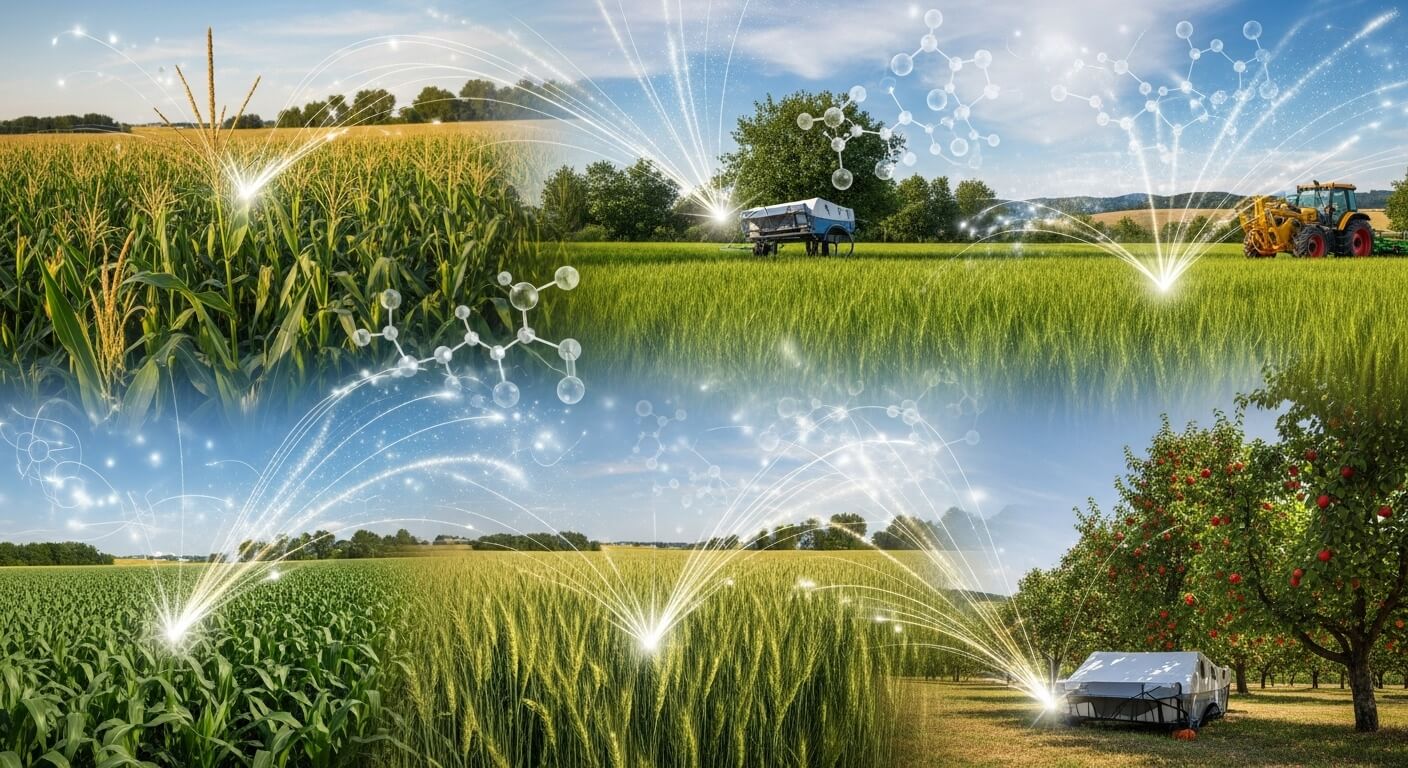When you think of pheromones, you might imagine a moth searching for a mate in the dark. But what if that same powerful attraction could be harnessed to protect the food we eat? That’s exactly what’s happening in fields and orchards around the world, where pheromones have become a cornerstone of modern, sustainable agriculture.[14], [54], [55] This practical, large-scale application provides some of the most compelling proof that synthetic chemical signals can be used to reliably influence animal behavior.
The Problem with Pests
For farmers, insect pests like the codling moth in apple orchards or the bollworm in cotton fields can be devastating, ruining crops and causing massive economic losses.[56], [54] For decades, the primary solution was broad-spectrum chemical pesticides. While effective, these can have unintended consequences, harming beneficial insects like pollinators, affecting wildlife, and leading to pesticide resistance.[56], [54]
A Smarter Solution: Pheromone-Based Pest Control
Chemical ecologists and entomologists have turned the pests’ own communication system against them. By identifying, synthesizing, and deploying the specific sex pheromones of pest insects, farmers can now control them with remarkable precision.[14], [55] This is primarily done in two ways:
1. Monitoring and Trapping
Pheromone-baited traps are ingenious devices that use a synthetic lure to mimic the scent of a female insect calling for a mate.[22], [15], [57], [58] Male insects are drawn to the scent and become stuck in the trap.
These traps are not designed to eliminate the entire pest population, but to act as an early warning system.[57] By monitoring the number of pests caught, farmers can detect the arrival of a pest, estimate its population size, and time other control measures with precision, reducing overall pesticide use.[15], [57]
2. Mating Disruption
This technique takes a more proactive approach. Instead of a few traps, the entire orchard or field is saturated with tiny pheromone dispensers.[21], [22] This floods the air with the female’s “calling” scent, creating a cloud of chemical confusion.
The male insects are overwhelmed by the scent from thousands of false trails.[22] Unable to distinguish the real signal from a female from the synthetic background noise, they fail to locate mates. This effectively disrupts the reproductive cycle, causing the pest population to crash without the use of a single toxic chemical.[21], [22], [14]
A Proven, Multi-Million Dollar Science
Pheromone-based pest management is not a fringe experiment; it is a proven, environmentally friendly alternative to traditional pesticides used on millions of hectares worldwide.[3] It demonstrates, on a massive commercial scale, a core scientific principle: specific chemical molecules can be manufactured to produce a predictable and powerful behavioral response in a target species. This real-world success story grounds the entire field of pheromone science in practical, verifiable results.


Leave a Reply